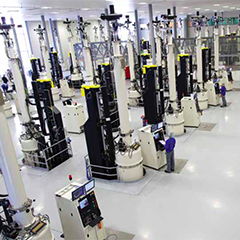Dr Rob Grant FRSC founded GR2L with the objective of commercialising chemical looping combustion technology into the gas purification market. Here, he gives us an insight into the untapped potential of argon recycling.
In the production of silicon wafers to be fabricated into solar cells and micro-electronic devices high purity argon (better than 99.999%) is used to control the impurity levels present during the manufacturing process to an acceptable level. The trend in the solar industry has been to reduce the argon purge flows to a minimum, to keep the cost per wafer down; however this comes at the expense of wafer purity which results in lower performance solar cells. High purity wafers for use in micro-electronic applications typically utilise two to three times as much argo n as for the solar PV application.
The emerging trend in the solar PV market is to move to higher purity high performance and/or n-type doped wafers, to maximise the efficiency of the resulting solar cells. This will require argon purge gas flows to increase again and since the supply of high purity argon is essentially fixed, the laws of ‘supply and demand’ dictate that the argon price will increase. For manufacturers faced with this ‘double whammy’ of increasing argon usage and cost, the appeal of argon recycle, which practically reduces the argon cost per wafer by a factor of ten, is becoming ever more attractive.
ArgonØ recycle strategies
A typical production facility will have many tens of furnaces located in a furnace hall, Figure 1, and in order to recycle the argon, it first needs to be recovered from the exhaust lines of the vacuum pumps associated with the individual furnaces, then purified and returned to the argon furnace purge supply line. There are two philosophies to the recycle of exhaust gases from process tools: Point of Use recycle where the exhaust gas is diverted to a local purification system, close coupled to a limited number of tools, say <10, and Central processing where all the facility exhaust lines, say >50, are combined together and fed to a single, larger, purification system.



























